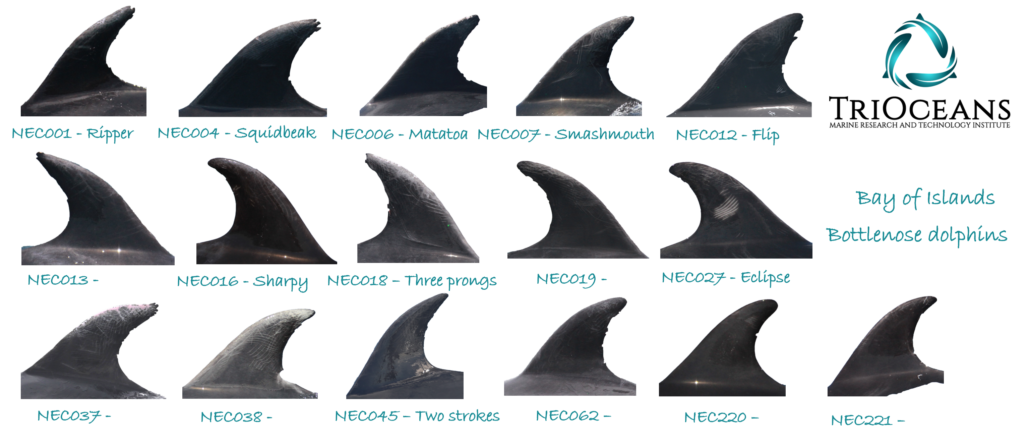Did you know not all bottlenose dolphins are the same?
Two ecotypes can be found here: a coastal and a pelagic (or offshore) bottlenose dolphin. While not different enough to be classified as separate species, those two “groups” do not mix, and the TriOceans team even assisted in a study identifying they use slightly different whistles. So how can you tell the difference? Look for circular scarring along their flanks: these scars come from the cookie cutter shark (Isistius brasiliensis) and are only seen on the pelagic individuals. The pelagic ecotype remains widely unknown, however it does seem to be of a friendly nature: they are often seen in association with pilot whales or false killer whales. In fact, false killer whales in New Zealand have never been seen without pelagic bottlenose dolphins around! The video above was recorded during scientific research in Northland and shows the close association between 2 different species. Don’t forget to turn your sound on! Can you hear the difference between the 2 species?

 TriOceans
TriOceans
